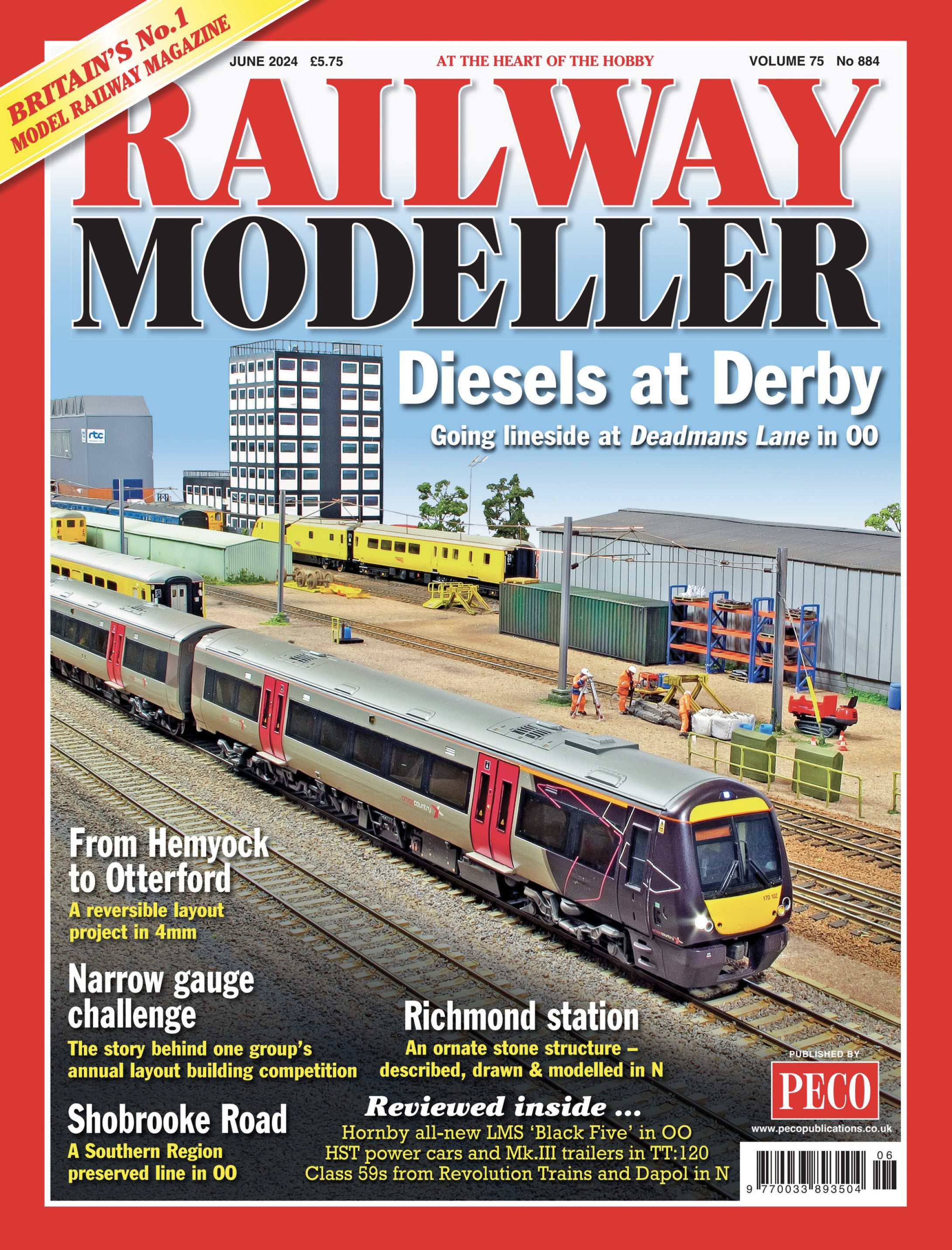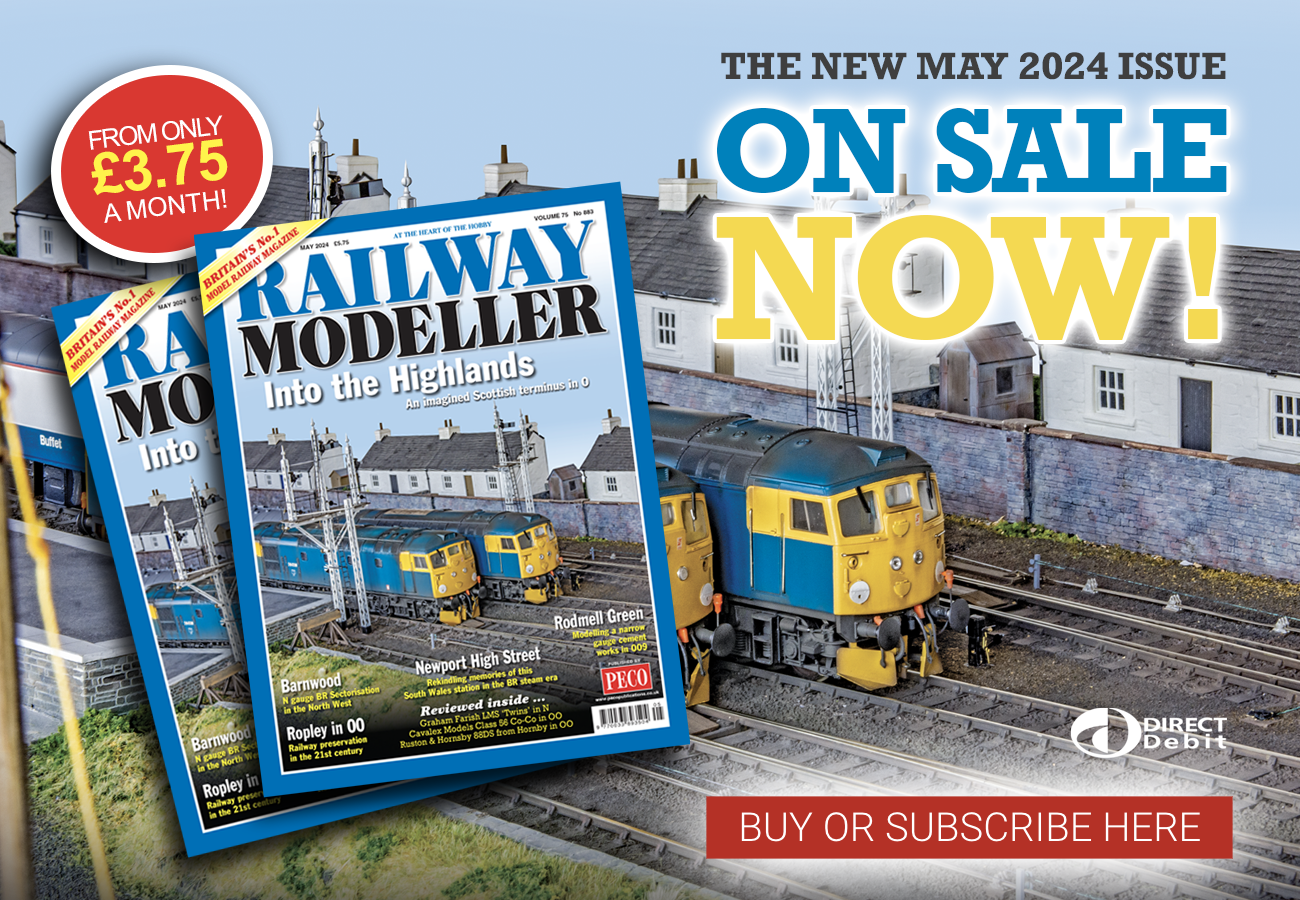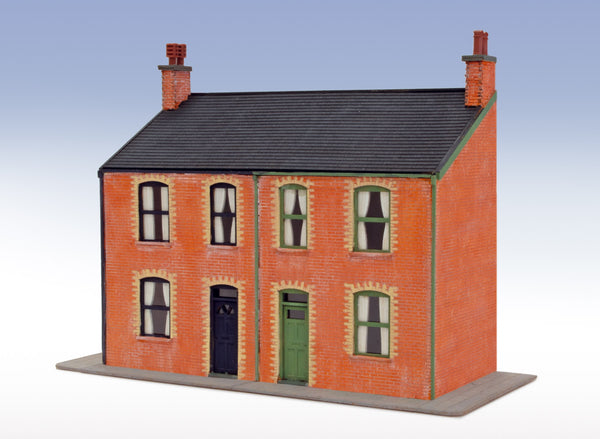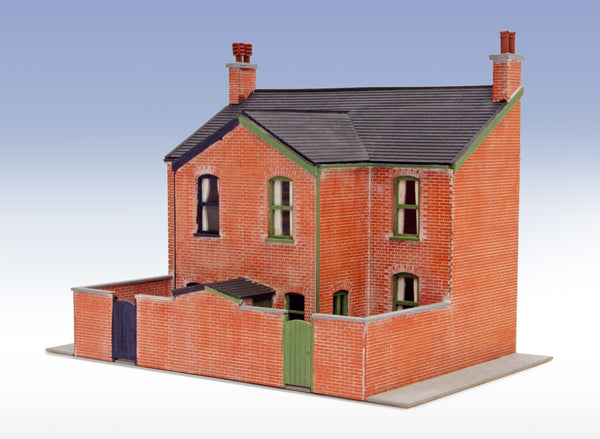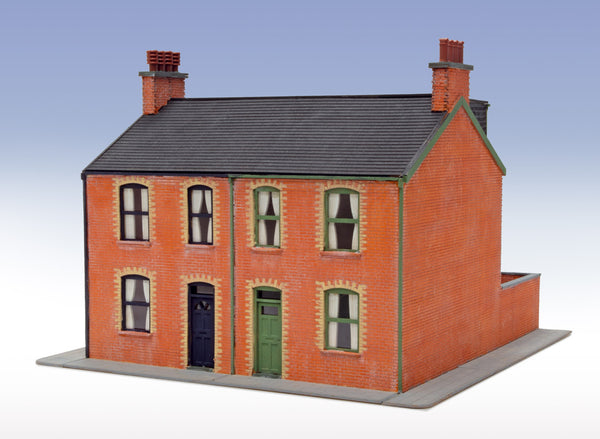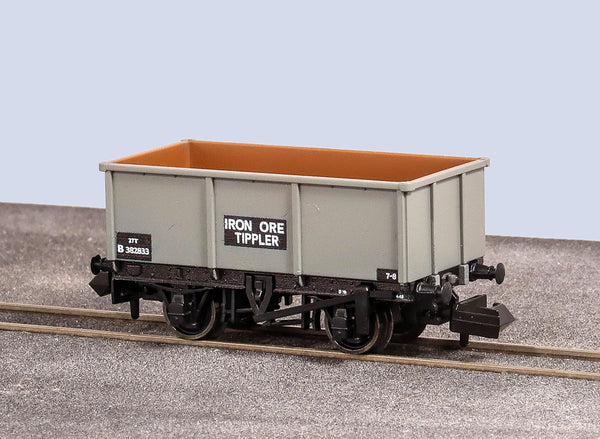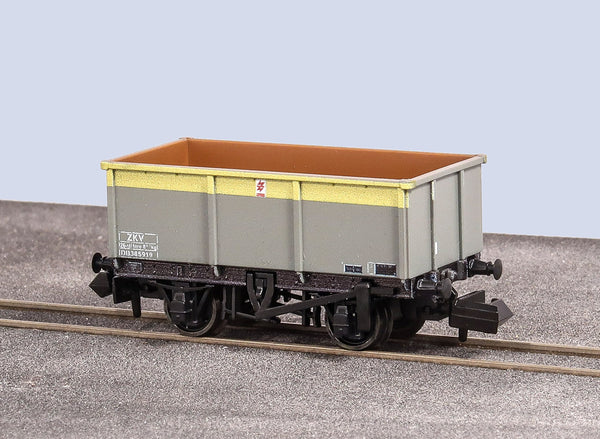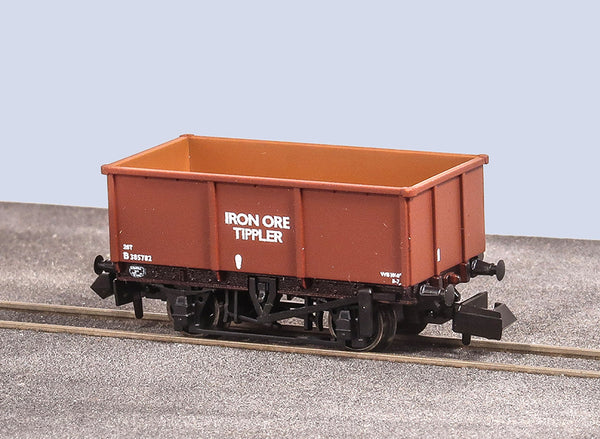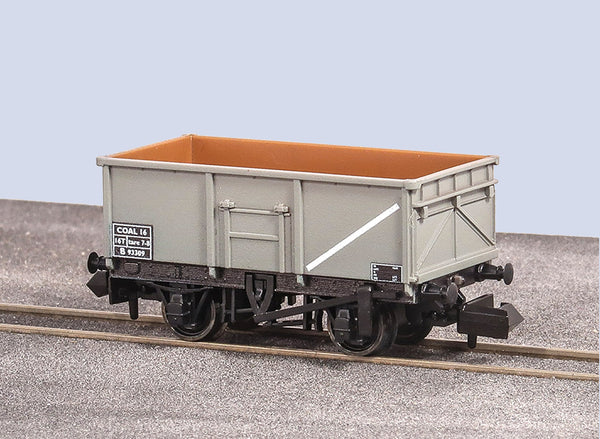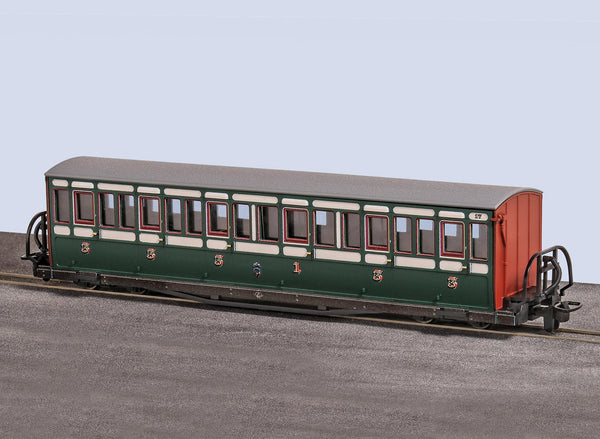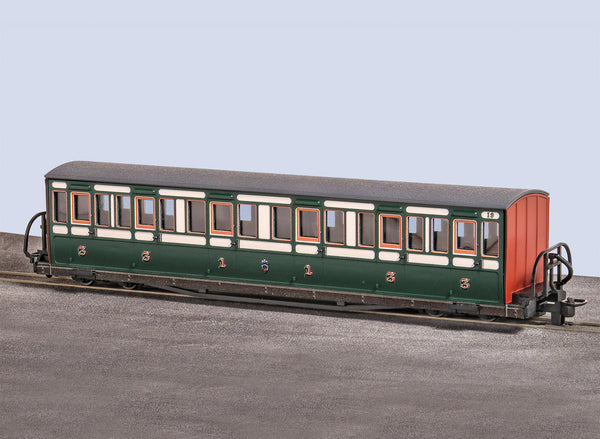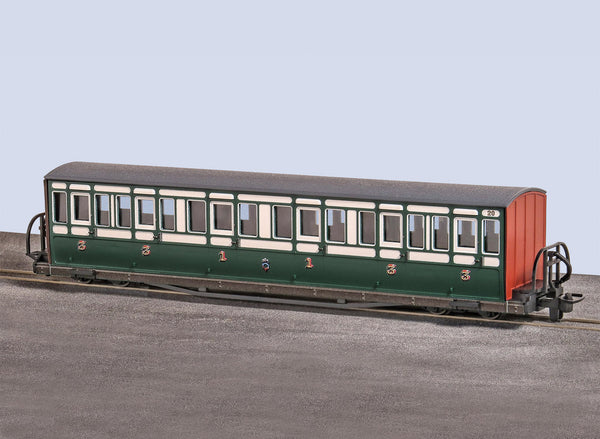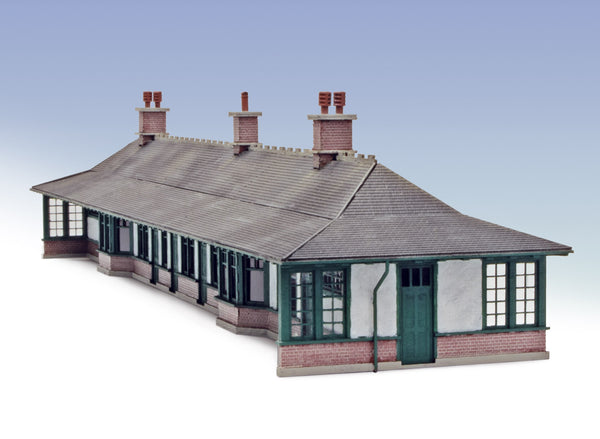BROWSE PECO PRODUCTS
Browse through our complete product portfolio.
64 Products Found
OO/HO Victorian Low Relief House Fronts
The NEW Laser-Cut Victorian Houses
Alongside almost any railway there will be houses, and in model form it will be the low-relief buildings that will be of particular interest to modellers, especially as a feature along the backscene. We have been working hard to develop a new range of low-relief house fronts and backs, as well as the full building and we start off here with a typical semi-detached brick house typical of the Victorian period in Britain. You will be familiar with this style of house as they are still everywhere in the UK!
Our kits have been carefully designed for ease of assembly and feature some lovely detail. The texture of the laser-cut surface replicates the brick courses and slate tiles perfectly. Detailing around the windows and doors and the inclusion of guttering and downpipes is noteworthy, as are the curtains in the window and the provision of additional dormers (house backs kit) and bay windows (house front kit), plus the optional pavement around the base. The dormers, bay windows and pavement are included in the LK-208 full house kit too!
Several kits can be combined to create a terrace of houses, so commonly seen in locations around the country in relation to the railways. A row of house backs alongside the railway and against the backscene, a row of house fronts high on a hill above the station, or a street of semi-detached houses in a town scene, the possibilities are endless! The kits will need painting so the modeller can personalise each one, so necessary when you create a terrace of buildings. No two houses would ever be the same. Acrylic paints are best. We demonstrate this in our new PECO TV video.
OO/HO Victorian Low Relief House Backs
The NEW Laser-Cut Victorian Houses
Alongside almost any railway there will be houses, and in model form it will be the low-relief buildings that will be of particular interest to modellers, especially as a feature along the backscene. We have been working hard to develop a new range of low-relief house fronts and backs, as well as the full building and we start off here with a typical semi-detached brick house typical of the Victorian period in Britain. You will be familiar with this style of house as they are still everywhere in the UK!
Our kits have been carefully designed for ease of assembly and feature some lovely detail. The texture of the laser-cut surface replicates the brick courses and slate tiles perfectly. Detailing around the windows and doors and the inclusion of guttering and downpipes is noteworthy, as are the curtains in the window and the provision of additional dormers (house backs kit) and bay windows (house front kit), plus the optional pavement around the base. The dormers, bay windows and pavement are included in the LK-208 full house kit too!
Several kits can be combined to create a terrace of houses, so commonly seen in locations around the country in relation to the railways. A row of house backs alongside the railway and against the backscene, a row of house fronts high on a hill above the station, or a street of semi-detached houses in a town scene, the possibilities are endless! The kits will need painting so the modeller can personalise each one, so necessary when you create a terrace of buildings. No two houses would ever be the same. Acrylic paints are best. We demonstrate this in our new PECO TV video.
OO/HO Victorian Low Relief House Complete
The NEW Laser-Cut Victorian Houses
Alongside almost any railway there will be houses, and in model form it will be the low-relief buildings that will be of particular interest to modellers, especially as a feature along the backscene. We have been working hard to develop a new range of low-relief house fronts and backs, as well as the full building and we start off here with a typical semi-detached brick house typical of the Victorian period in Britain. You will be familiar with this style of house as they are still everywhere in the UK!
Our kits have been carefully designed for ease of assembly and feature some lovely detail. The texture of the laser-cut surface replicates the brick courses and slate tiles perfectly. Detailing around the windows and doors and the inclusion of guttering and downpipes is noteworthy, as are the curtains in the window and the provision of additional dormers (house backs kit) and bay windows (house front kit), plus the optional pavement around the base. The dormers, bay windows and pavement are included in the LK-208 full house kit too!
Several kits can be combined to create a terrace of houses, so commonly seen in locations around the country in relation to the railways. A row of house backs alongside the railway and against the backscene, a row of house fronts high on a hill above the station, or a street of semi-detached houses in a town scene, the possibilities are endless! The kits will need painting so the modeller can personalise each one, so necessary when you create a terrace of buildings. No two houses would ever be the same. Acrylic paints are best. We demonstrate this in our new PECO TV video.
BR Iron Ore Tippler, Unfitted Grey
Built in the 1950's these 35t GLW (Gross Laden Weight) wagons served the railways for many years transporting iron ore from British iron ore mines for steel production. As that traffic ended, so the wagons found plenty of other uses especially with the BR Civil Engineers department and many lasted into the 1980's as a result. This bauxite liveried example represents the wagon in its original brake-fitted condition, as opposed to the unbraked grey livery version, although to be fair it would never have been so clean! An ideal weathering project for the modeller! 
Produced from new tooling, fine moulded detail, sharp printing, free running metal-tyred wheels and removable couplers are the key features of our new models. But best of all, they represent excellent value for money when compared to the competition, and all made in the UK.
BR Iron Ore Tippler, Civil Engineers "Dutch"
Built in the 1950's these 35t GLW (Gross Laden Weight) wagons served the railways for many years transporting iron ore from British iron ore mines for steel production. As that traffic ended, so the wagons found plenty of other uses especially with the BR Civil Engineers department and many lasted into the 1980's as a result. This bauxite liveried example represents the wagon in its original brake-fitted condition, as opposed to the unbraked grey livery version, although to be fair it would never have been so clean! An ideal weathering project for the modeller! 
Produced from new tooling, fine moulded detail, sharp printing, free running metal-tyred wheels and removable couplers are the key features of our new models. But best of all, they represent excellent value for money when compared to the competition, and all made in the UK.
BR Iron Ore Tippler, Fitted, Bauxite
Built in the 1950's these 35t GLW (Gross Laden Weight) wagons served the railways for many years transporting iron ore from British iron ore mines for steel production. As that traffic ended, so the wagons found plenty of other uses especially with the BR Civil Engineers department and many lasted into the 1980's as a result. This bauxite liveried example represents the wagon in its original brake-fitted condition, as opposed to the unbraked grey livery version, although to be fair it would never have been so clean! An ideal weathering project for the modeller! 
Produced from new tooling, fine moulded detail, sharp printing, free running metal-tyred wheels and removable couplers are the key features of our new models. But best of all, they represent excellent value for money when compared to the competition, and all made in the UK.
BR 16 Ton Mineral (Coal) Wagon , Unfitted, Grey
The 16 Ton Mineral Wagon here is the basic unfitted coal wagon, so typical and common a sight on Britain's railways during the 1950s to 1980s. Now all gone with the demise of the coal industry. There would be rakes and rakes of these wagons trailing behind a locomotive throughout the UK, but most likely more so around the coalfields.
Produced from new tooling, fine moulded detail, sharp printing, free running metal-tyred wheels and removable couplers are the key features of our new models. But best of all, they represent excellent value for money when compared to the competition, and all made in the UK.
FR Short 'Bowsider' Bogie Coach - Early Preservation - Green 17
FR Short 'Bowsider' Bogie Coach - Early Preservation - Green 18
FR Short 'Bowsider' Bogie Coach - Early Preservation - Green 19
FR Short 'Bowsider' Bogie Coach - Early Preservation - Green 20
WHL Rannoch Station
The NEW Rannoch Station Wooden Laser-Cut Kit
The style of Rannoch Station building, built in 1894, is typical of the type of structure found on the North British-built line from Glasgow to Fort William. Sitting on an island platform this is a long building, so consequently the model created from this kit is certainly impressive! By contrast the platform-mounted signal box is quite diminutive when compared with the station, but both structures possess the stylish "Swiss Cottage" style of construction and consequently are very attractive.
Despite its size we have designed the station kit to be as easy to construct as possible, with carefully designed parts that fit snuggly together and the assembly instructions are clear and informative. It would not surprise us if the signal box kit is adapted for other uses, such as a shelter, tea room, waiting room or greenhouse: it has many possibilities! The kits feature some incredible detail and texture, something that we have been working really hard to achieve - so much better than the basic appearance of so many other laser cut kits available on the market.
FOOTPRINT (INC. CANOPY OVERHANG) 460mm x 114mm


